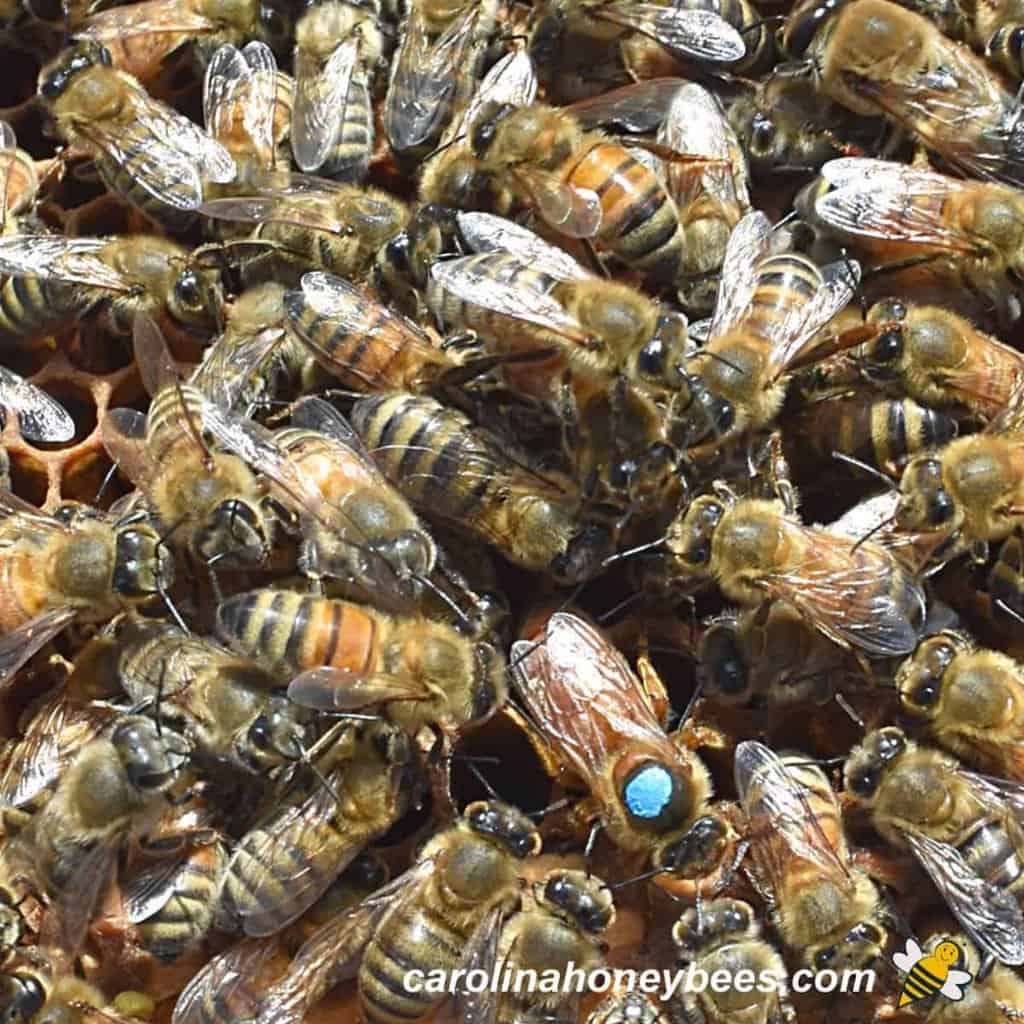Have you ever wondered what a queen bee looks like? Unlocking the secrets of beekeeping can help you understand the vital role that queen bees play in the hive, and how they differ from the other bees in the colony. Queen bees are the most important members of the colony, and they are the only ones capable of producing eggs. In this article, we’ll explore the physical characteristics of queen bees, and the importance of beekeeping.
What is a Queen Bee?
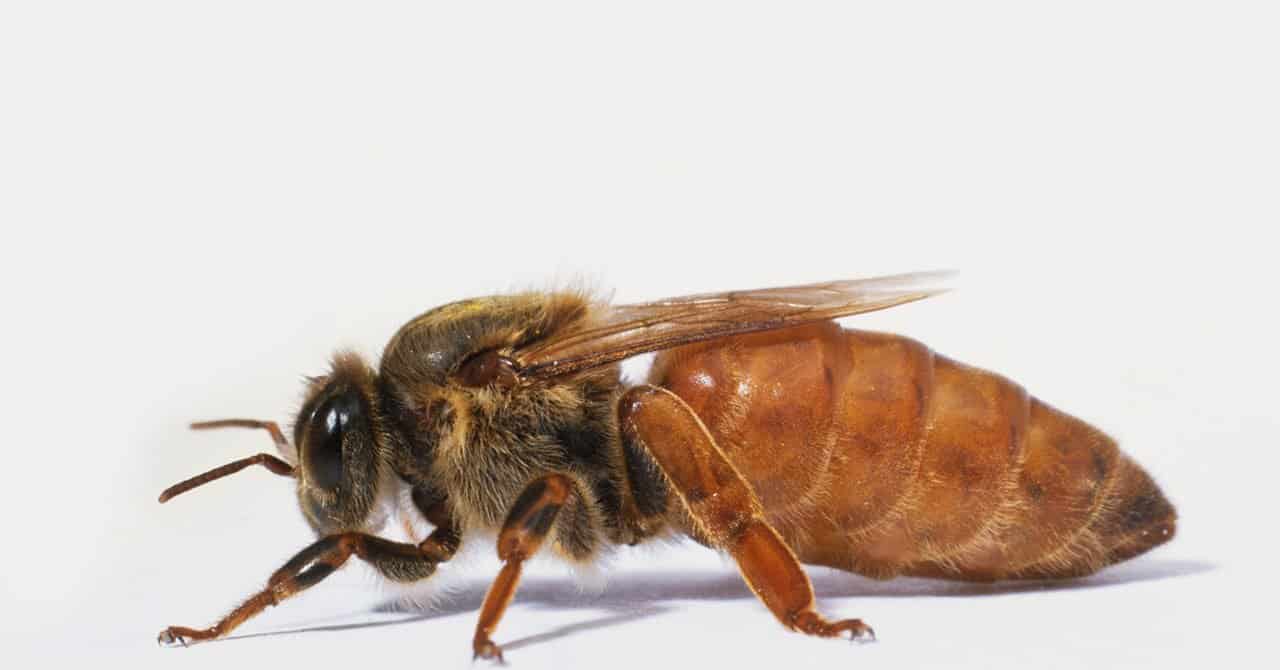
A queen bee is the mother of the entire bee colony. She is the largest bee in the colony and lays the majority of eggs that are used to create new worker bees. The queen bee is the only bee that can reproduce, and she is the only one that can lay fertilized eggs capable of developing into a new queen bee.
The queen bee has multiple roles within the colony. She is responsible for laying the eggs that will sustain the colony, as well as regulating the temperature of the hive and the production of honey. The queen bee also releases pheromones that keep the other bees in the hive in line and regulate their behavior.
| Queen Bee | Worker Bee |
| 15-20mm | 8-15mm |
Queen bee size comparison can vary depending on the species, but on average they measure 15-20mm in length while worker bees measure 8-15mm. The color and pattern of a queen bee’s body is usually different from the rest of the colony, making her easy to identify. She also has longer wings than the other bees in the hive.
The queen bee is a vital part of the bee colony, and without her the colony would quickly die out. Beekeepers must be careful to ensure that the queen bee is healthy and producing at a healthy rate. If the queen bee dies, a new queen must be introduced or the colony will die.
Characteristics of a Queen Bee
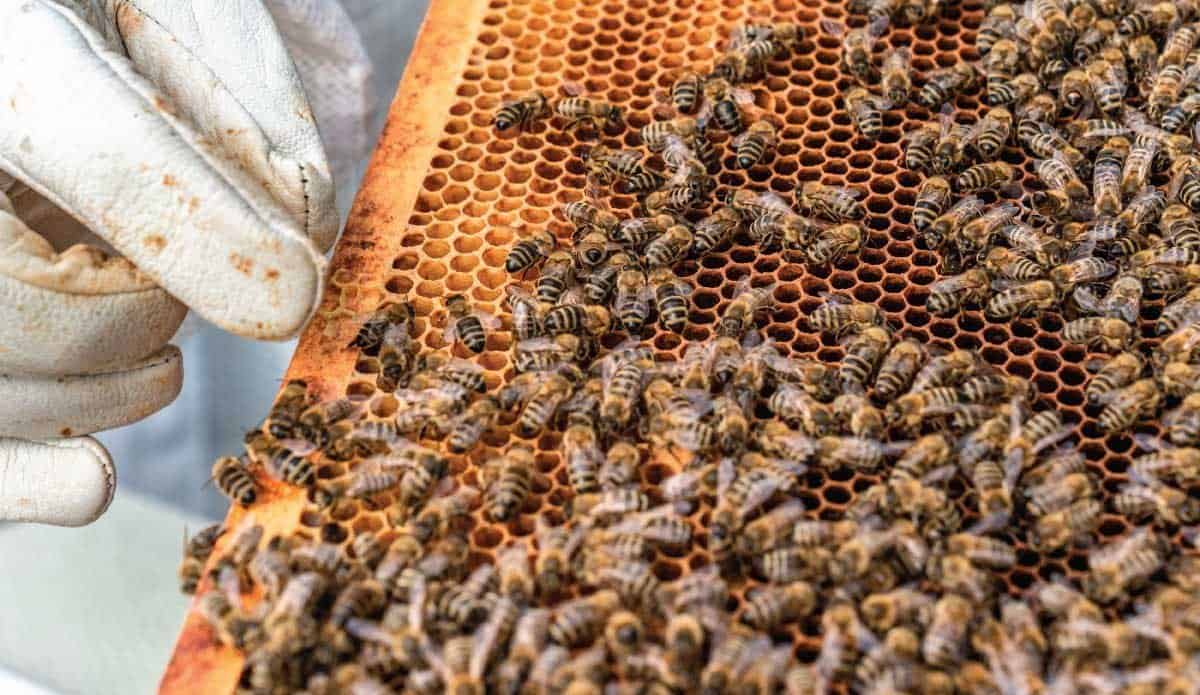
Size
A queen bee is the largest bee in a honey bee colony, larger than the worker bees. Queens can reach up to two centimeters in length and are usually slightly darker than the workers.
Color
The queen bee is usually darker than the worker bees, varying in color from light yellow to dark brown. She may also have stripes or bars on her body depending on the species.
Behavior
The queen bee is the only fertile female in the hive, and her primary purpose is to lay eggs. She does not forage for food like the worker bees, instead spending her time mating with drones and laying eggs. The queen bee is also responsible for producing a special pheromone that helps to keep the hive together and regulate the behavior of the worker bees.
Queen Bee Size Comparison
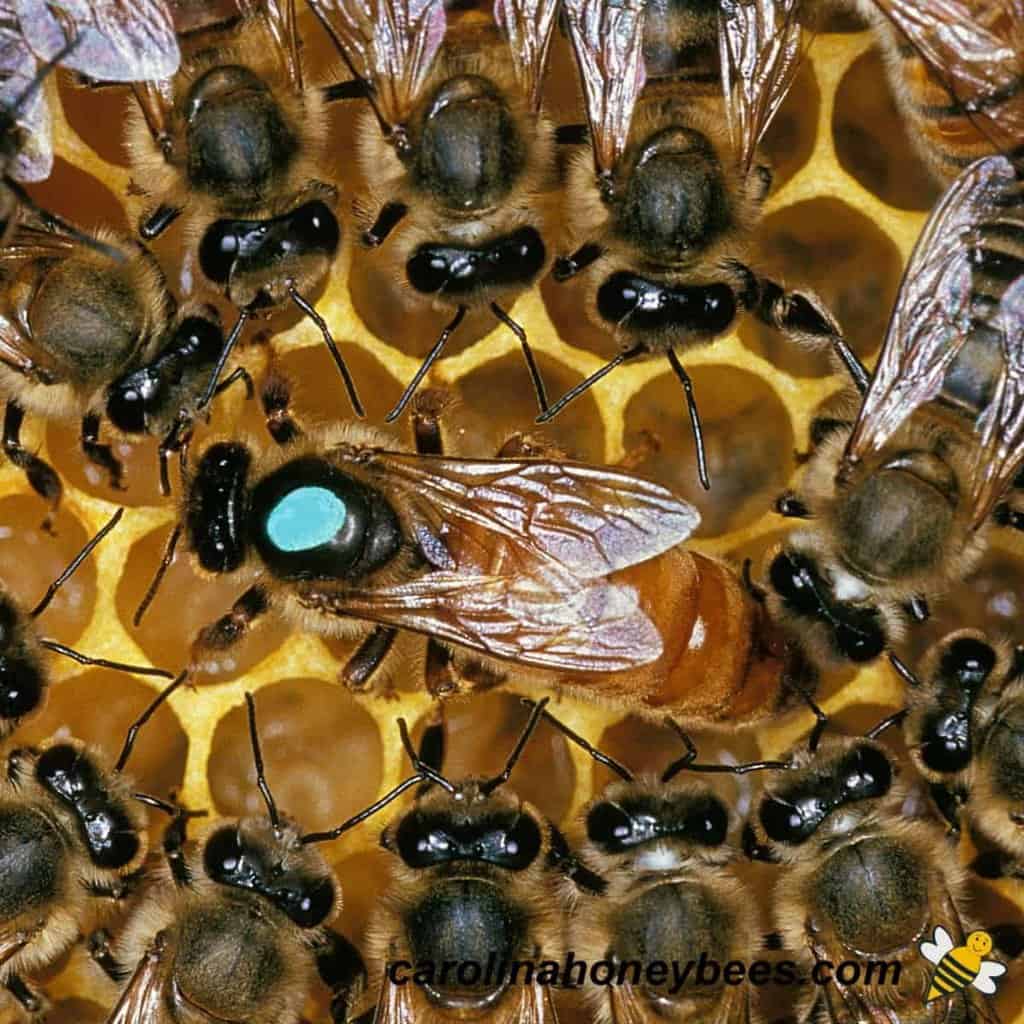
Queen Bees are significantly larger than their worker bee counterparts. They are typically around 18-20mm long while worker bees range from 11-15mm. The larger size of the queen bee serves an important role in the hive, as it allows her to lay a large number of eggs each day. Furthermore, the queen bee’s larger size allows her to be easily spotted among the other bees in the hive, making it easier for the workers to identify her and pay her the respect that is due to the queen of the hive.
The queen bee’s size is determined by her genetics, as well as her diet. Queen bees are fed a special diet known as ‘royal jelly’ which is packed with essential vitamins and minerals that help her to grow and develop. This diet also helps to ensure that the queen bee is healthy and productive, which is essential for the continued success of the hive.
With the help of a magnifying glass, you can easily compare the size of the queen bee to the worker bees in your hive. This can be a great way to check that the queen bee is healthy and productive, and to ensure that she is the rightful ruler of the hive.
Now that you know what is a queen bee look like and the size comparison between her and her worker bees, you can better understand and appreciate the important role she plays in the hive.
Queen Bee Characteristics
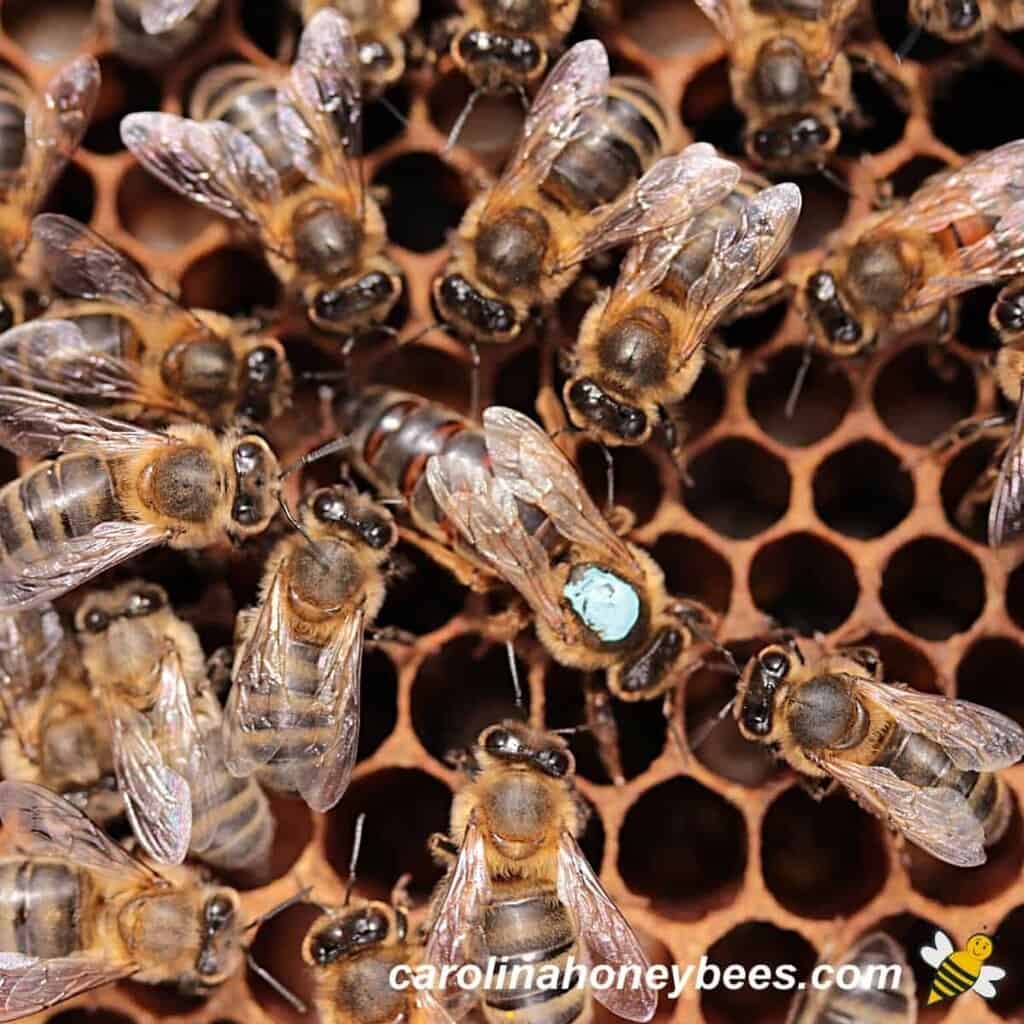
Egg Laying
A queen bee is the most important part of any bee colony. This special bee has the important job of laying eggs and producing the colony’s next generation. She is the only bee that can produce fertilized eggs, which develop into female worker bees.
Pheromones
Queen bees also produce special pheromones, which helps to coordinate the activities of the bee colony. These pheromones are highly attractive to other bees and can even help to entice wild bees to a new hive.
Body Structure
Queen bees have a longer body than their worker bee counterparts, allowing them to lay more eggs, and they often have longer wings, allowing them to travel further in search of food and mates. Their abdomens are also larger, allowing them to store more fat than worker bees. They also have a distinct yellow-brown coloration and may have black stripes.
Queen Bee Look Alike
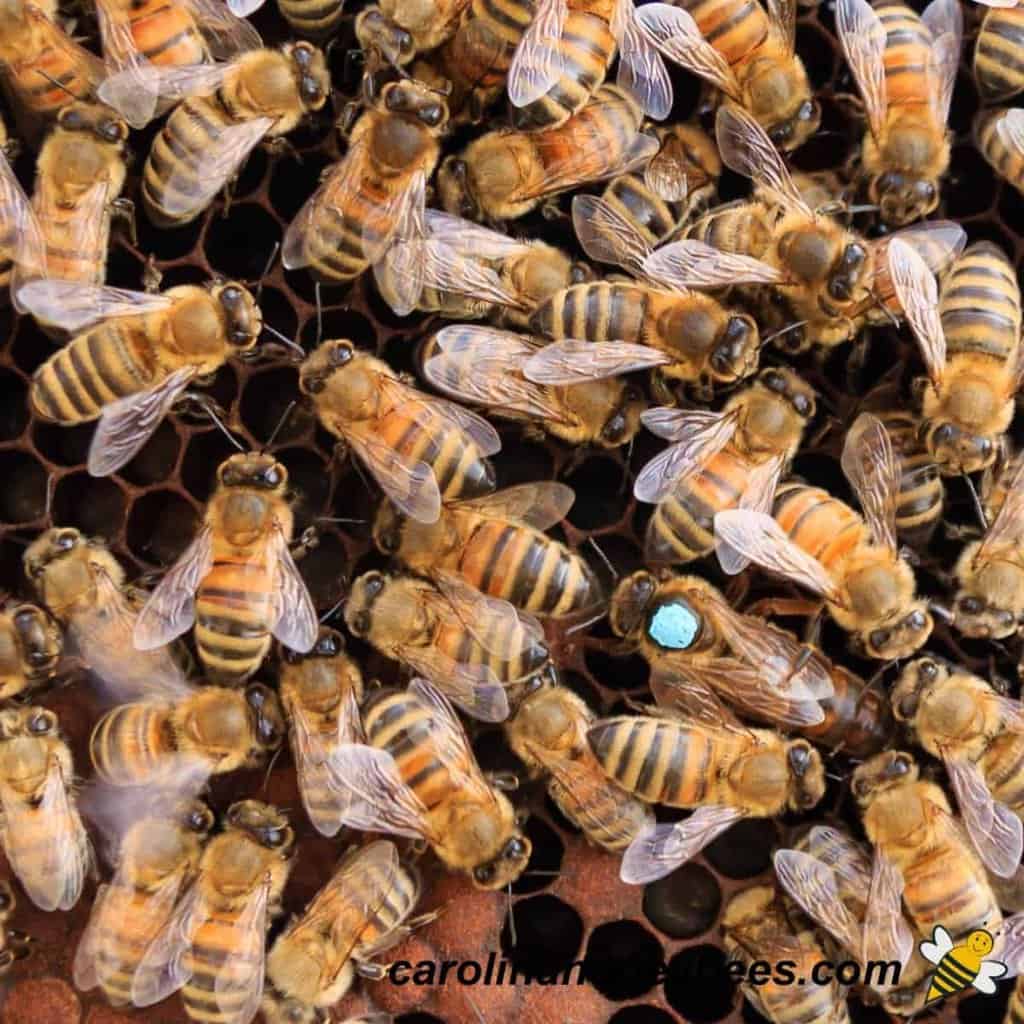
| Characteristic | Queen Bee | Worker Bee |
|---|---|---|
| Size | Bigger than worker bee | Smaller than queen bee |
| Colour | Light yellow | Darker yellow |
| Shape | Longer and more slender | Shorter and plumper |
| Abdomen | Longer and more pointed | Shorter and round |
Queen bees and worker bees look quite similar, but there are some distinct characteristics that distinguish the two. Queen bees are bigger than worker bees and usually have a light yellow colour. Their shape is also different, with the queen bee being longer and more slender, while the worker bee is shorter and plumper. The queen bee’s abdomen is also longer and more pointed, while the worker bee’s is shorter and round.
Queen Bee Life Cycle
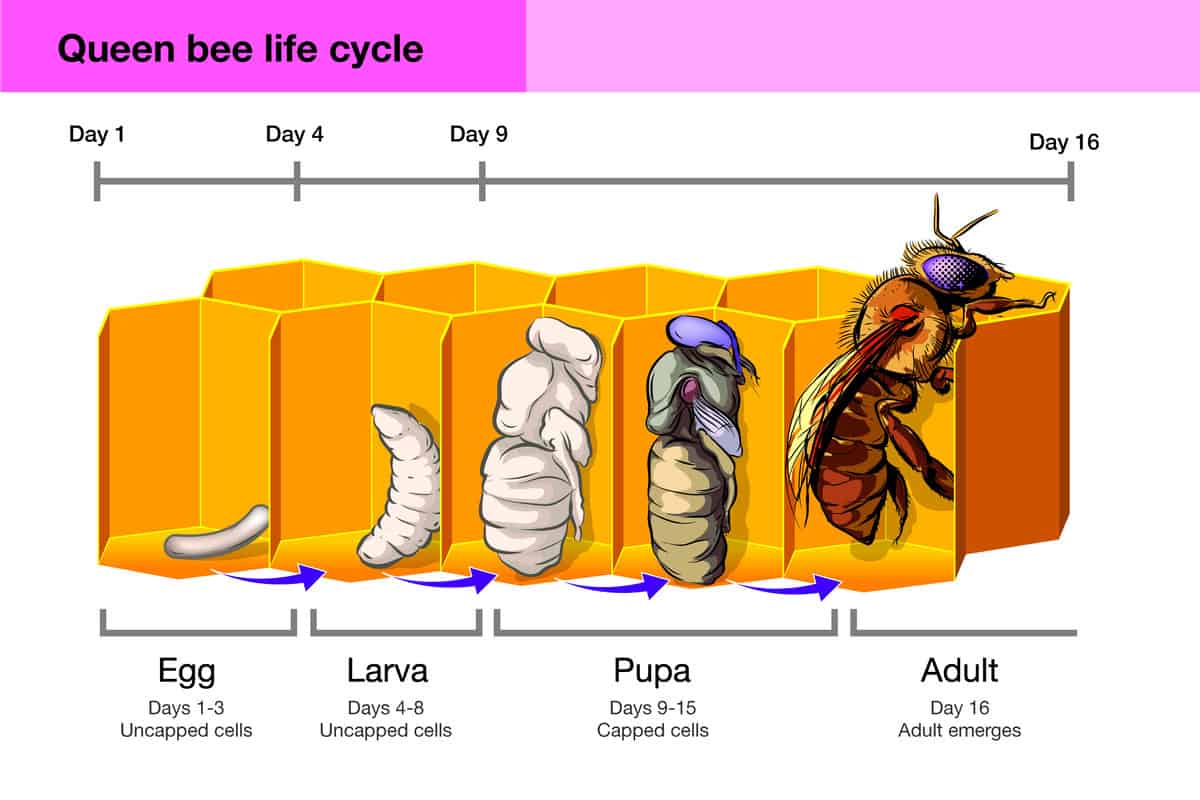
The life cycle of a queen bee is unique, compared to that of the worker bees and drones. It all begins with the egg, laid by the queen bee in a special cell called a queen cup, which is larger than the regular bee cells. After three days, the egg hatches and the larva will develop and be fed royal jelly by the worker bees.
The larva will then spin a cocoon and pupate into an adult. After 16 days, the queen bee will break out of her cocoon and take her first flight. After about a week, she will start to lay eggs, and her life cycle will continue.
The queen bee will then lay eggs for the rest of her life. She will live up to five years and can lay up to 2,000 eggs per day. The eggs she lays will become worker bees, drones, or new queens.
Queen Bee Lifespan:
- Egg: 3 days
- Larva: 6 days
- Pupa: 7 days
- Adult: 5 years
Queen Bee Reproduction
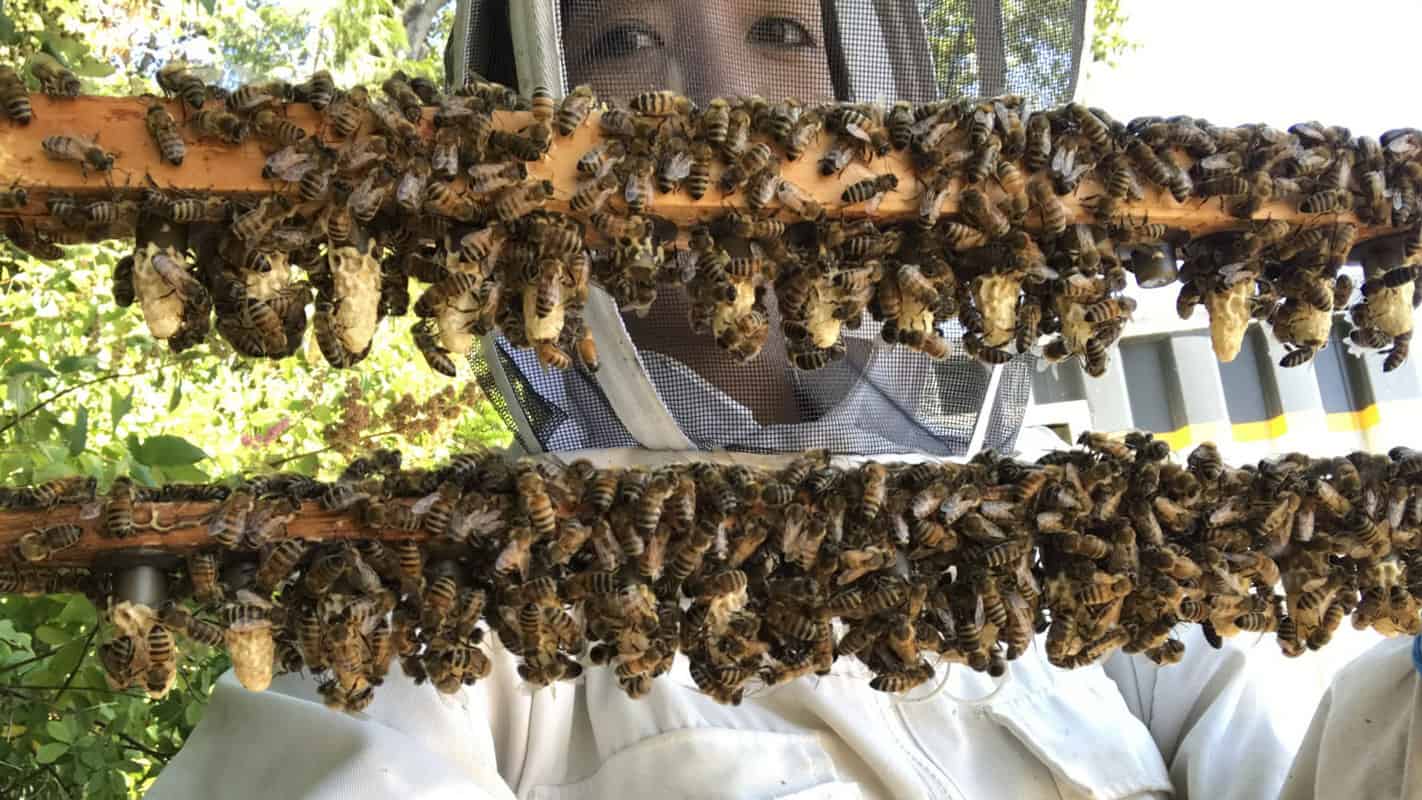
Queen Bee Reproduction is essential for the survival of the hive. Queen bees are the only bees in the colony that are able to reproduce. They are capable of producing hundreds of eggs over the course of their lifetime. The queen bee is responsible for the fertility of the hive and the success of the colony.
- A queen bee lays fertilized eggs in the brood chamber, which will develop into worker bees.
- She produces brood food for the larvae, a mixture of honey and pollen.
- The queen bee also produces a pheromone called queen substance, which helps to keep the hive together.
- The queen bee mates with several drones in her lifetime, ensuring a healthy and diverse gene pool.
- The queen bee will lay eggs continually until she dies or is superseded by a younger queen.
The reproductive cycle of a queen bee is essential to the long-term health of the hive. A healthy queen bee is essential for a successful bee colony, and beekeepers must pay special attention to their queen’s health and behaviour.
Queen Bee Importance
- Queen bee is the only bee that can reproduce. Only queen bees can lay eggs, and they are responsible for the growth of the entire colony. They lay thousands of eggs every day, and their presence is crucial for the survival of the colony.
- Queen bee is the leader of the colony. The queen bee is the one that gives orders to the other bees. She also determines the size of the colony, and she is the one who decides when to swarm and when to stay in one place.
- Queen bee’s pheromones are essential for the health of the colony. Queen bees release pheromones that help the colony to recognize her as the leader and to stay together. These pheromones also help the bees to stay calm, and they can also help the colony during times of stress.
- Queen bee is the only bee that can live for a long time. Queen bees can live for up to five years, while workers and drones usually die after about one year. This makes the queen bee very important for the longevity of the colony.
- Queen bee is the only bee that can mate. The queen bee is the only bee that can mate with drones from other colonies, and this is important for the genetic diversity of the colony. This helps the colony to remain healthy and strong.
Frequently Asked Questions
What Role Does a Queen Bee Play in a Bee Colony?
The queen bee is the most important member of the bee colony. She is the only bee capable of laying fertilized eggs, and is responsible for the growth and sustainability of the colony. The queen bee’s primary function is to lay eggs which will eventually produce worker bees, drones, and future queen bees. She also produces pheromones that help the workers and drones understand their roles and maintain order within the colony. Without a queen bee, the colony will quickly collapse.
How Long Does a Queen Bee Typically Live?
Queen bees live for around 2-4 years, although some may live for up to 7 years. Queens are generally replaced every 1-2 years to ensure the colony remains healthy and productive. Queens are responsible for laying eggs, so replacing them is essential for the health of the colony.
How can beekeepers identify a queen bee?
- Size: Queen bees are typically larger than the other bees in the hive.
- Marking: Some beekeepers mark their queen bees with a dot of paint or other marking.
- Behaviour: Queen bees can be identified by their behaviour, as they move around the hive differently than the other bees.
- Egg Laying: Queen bees are the only ones that lay eggs in a hive.
What is the primary purpose of a queen bee in a bee colony?
- Reproduction: The primary purpose of the queen bee is to lay eggs for the colony. It is the queen bee that is responsible for the reproduction of the colony, and her eggs are the source of the new bees that will eventually populate the hive.
- Initiating Brood Production: The queen bee is responsible for initiating the production of brood in the colony. She will lay eggs which will eventually become the new bees in the colony. Without the presence of a queen bee, the colony will not be able to reproduce.
- Maintaining the Social Structure of the Colony: The queen bee is responsible for maintaining the social structure of the colony. She is the leader of the colony, and it is her job to ensure that the colony is functioning properly. Without the presence of a queen bee, the colony will not be able to function properly.
- Providing Scent Markers: The queen bee also provides scent markers in the colony. These scent markers are used by the worker bees to navigate the hive and ensure that the colony is functioning properly.
How often should beekeepers replace a Queen Bee?
Queen bees generally last between 2 and 5 years, but beekeepers may opt to replace them sooner if their colony is not producing enough honey or wax. A beekeeper should also replace the queen bee if she is not laying eggs, or if her colony is exhibiting aggressive behavior. It is recommended to replace a queen bee every 1-2 years to ensure healthy colony production.
Conclusion
Queen bees have distinct physical characteristics from their worker bee sisters. The queen bee is larger in size, has a long and slender abdomen, and has a smooth thorax. They also have a gland that produces pheromones to control the behavior of the other bees in the hive. Understanding the physical features of a queen bee is essential for successful beekeeping.
